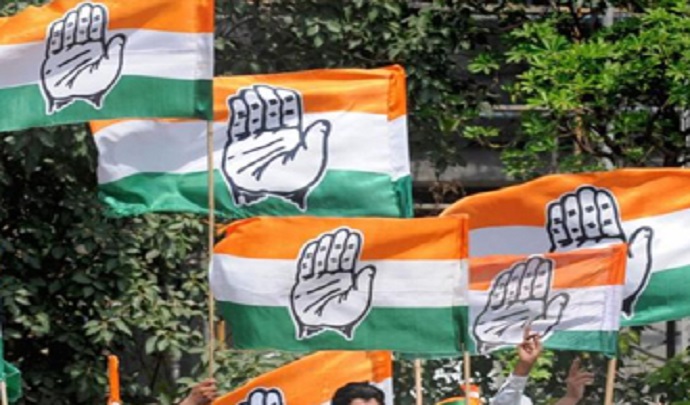Indian Elections 2018
December 15, 2018 | Expert Insights

Five Indian states went to the polls in November-December 2018 and kick-off a year-long election cycle which includes the 2019 General Election.
Background
India is a federal parliamentary democratic republic in which the President of India is the head of state and the Prime Minister of India is the head of government. India follows the dual polity system, i.e. a double government that consists of the central authority at the centre and states at the periphery.
Governments are formed through elections held every five years (unless otherwise specified), by parties that secure a majority of members in their respective lower houses (Lok Sabha in the central government and Vidhan Sabha in states).
India’s federal form of government requires each state also has its own government. The executive of each state is the Governor (equivalent to the president of India), whose role is ceremonial. The real power resides with the Chief Minister (equivalent to the Prime Minister) and the state council of ministers. States may either have a unicameral or bicameral legislature, varying from state to state. The Chief Minister and other state ministers are also members of the legislature
Analysis
Madhya Pradesh: Elections to the Madhya Pradesh Legislative Assembly were held on 28 November 2018 to elect members of the 230 constituencies in Madhya Pradesh. Political analysts predict that the election will be a direct political battle between the Bharatiya Janta Party (BJP) and the Indian National Congress (INC). While the Shivraj Singh Chouhan government will try to win for a consecutive 4th term, the INC will fight for winning the state after 2003. It is also a major battle between senior Congress leader Arun Yadav and the incumbent Chief Minister Shivraj Singh Chauhan as they face off each other in Budhni.
Opinion polls and predictions expected the BJP to retain power with 122 seats with the INC forming the opposition with 95 seats. However, the final tally for MP was 114 seats for the INC and 109 seats for the BJP. This will be a net loss of 57 seats for the BJP while the INC gained an impressive 56 seats. The results were expected to be declared on December 11, 2018, but due to technical difficulties, the final results were delayed till 12th December 8:30 am.
Chhattisgarh: The 2018 Chhattisgarh Legislative Assembly election was held to elect members to the Legislative Assembly of the Indian State of Chhattisgarh. The election was held in two phases for a total of 90 seats; the first for 18 seats in South Chhattisgarh was held on 12 November, and the second for the remaining 72 were held on 20 November 2018.
Opinion polls showed the BJP will return their mandate with a net gain of 7 seats, while the INC will turn out a poor show with a net loss of 14 seats. The Results were declared on December 11, 2018, with the BJP receiving just 15 seats and the INC with the clear majority of 68 seats. Chattisgarh was the BJP bastion in Eastern India, with Raman Singh being CM since 2003. The defeat will tilt the scales in INC’s favour for the upcoming General Elections in April/May 2019.
Mizoram: The legislative assembly election was held on 28 November 2018 to elect members of the 40 constituencies in Mizoram. The state has been a traditional INC bastion with very little opposition. The INC has an absolute majority in the house with 29 seats and opinion polls predict INC will retain power with a marginal shift in voter share and seats. The BJP has not won a single seat in Mizoram in the 2013 elections and is not predicted to breach the 5-seat mark in the 2018 elections as well.
Mizoram is just one of the two states in which the INC had a majority government as of November 2018. The results were declared on 11th December 2018, with the INC losing its majority to the regional party, the Mizo National Front (MNF). The MNF managed to gain 26 seats and the majority in the house. The Mizo National Front’s win in this election has weakened the prospects of both national parties with North Eastern voters before the 2019 General Elections. The INC and BJP combined won only 3 seats.
Telangana: The newly formed state voted overwhelmingly to keep K. Chandrashekar Rao’s TRS party in power. The TRS managed to secure 88 seats out of the possible 119, giving them a 2/3rd majority. The TRS had managed to claim 63 seats in the previous election, and the improvement is a sign of KCR’s growing popularity in the state with no opposition.
TRS’s victory secures a large leverage for the upcoming 2019 General Elections. TRS is not openly allied with either the INC or BJP and as such could capitalise on a hung parliament. Telangana has 17 Lok Sabha seats, and they could form a government with either party by demanding a larger role in the government.
Rajasthan: BJP’s stronghold in Western India inflicted a stunning defeat on the incumbent government by voting in the INC with 100 seats. The BJP lost 90 seats and finished as the second largest party with 73 seats.
INC’s victory in Rajasthan is a much-needed electoral win for the party which had been reduced to governing two states in the whole country before the election. Rajasthan’s 25 Lok Sabha seats are also open for the taking, with the BJP suffering from an anti-incumbency wave as well as indifferent governance over the past five years.
Assessment
Our assessment is that these five elections have changed the electoral standings of both major national parties before the 2019 General Elections. We believe that the defeat of the BJP, along with a resurgent INC, the 2019 General Election will be tightly contested with no clear favourites. We also feel that the INC will look to form an active, anti-BJP coalition with many regional parties to combat the incumbent government.








Comments